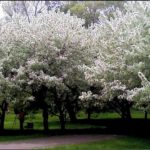Mango Cultivation in Sri Lanka: A Comprehensive Overview – By Malsha – eLanka
Image Source : echelon.lk
Mango cultivation holds a significant place in Sri Lanka’s agricultural landscape, both economically and culturally. As the second most widely cultivated fruit after bananas, mangoes are integral to local diets and contribute substantially to the nation’s fruit production.
Cultivation Areas and Varieties
Mangoes are cultivated across various regions in Sri Lanka, with notable concentrations in districts such as Anuradhapura, Monaragala, Kurunegala, Hambantota, Puttalam, and Jaffna. Over the past two decades, there has been a significant shift in cultivation patterns, with Anuradhapura surpassing Kurunegala as the leading mango-producing district due to expanded cultivation areas .
Sri Lanka boasts a diverse range of mango cultivars. Traditional varieties include ‘Karthacolomban’, ‘Vellaicolomban’, ‘Betti’, ‘Kohu’, and ‘Villard’. In recent years, the ‘TomEJC’ (also known as TJC) variety has gained prominence. Developed in the early 1990s and officially recognized in 2003, TomEJC is known for its large fruit size, low fiber content, and extended harvesting season from June to January .
Image Source : ips.lk
Production Trends and Export Potential
Sri Lanka’s mango production has been on an upward trajectory, with a 12.2% increase in production and a 5% improvement in yield over the past two decades . In 2021, the country produced approximately 97,890 metric tons of mangoes, ranking 34th globally. Projections indicate that production could reach 102,410 metric tons by 2026Export figures have also shown promising growth. Fresh mango exports reached 374 metric tons by 2022, while dried mango exports stood at 63 metric tons in the same year . Key export destinations include the United States, United Arab Emirates, Saudi Arabia, and the Maldives.
Cultivation Practices and Innovations
To maximize yield and land efficiency, Sri Lankan farmers have adopted high-density planting methods, especially for commercial cultivation. Common spacings include 5×5 meters, allowing for more trees per hectare and increased productivity .
Modern agricultural practices, such as the use of growth regulators like paclobutrazol, are employed to control vegetative growth and induce flowering, thereby enhancing fruit yield and quality .
Seasonality and Market Dynamics
Mango production in Sri Lanka exhibits two primary harvesting seasons due to the country’s diverse climatic zones:
-
Yala Season (April–July): Predominantly in the wet and intermediate zones.
-
Maha Season (October–January): Mainly in the dry zones.
This bimodal harvesting pattern leads to seasonal price fluctuations. For instance, prices for popular varieties like ‘Karthacolomban’ can peak during off-season months and drop significantly during peak harvest periods due to market saturation .
Future Prospects and Development Plans
The Sri Lankan Department of Agriculture has set ambitious targets to boost fruit production by 2027. For mangoes, the goal is to achieve a production rate of 9.5 metric tons per hectare. Strategies to reach this target include:
-
Variety Breeding: Developing and promoting high-yielding and disease-resistant mango varieties.
-
Integrated Pest Management (IPM): Implementing sustainable pest control methods to reduce crop losses.
-
Value Addition: Encouraging the production of mango-based products like jams, chutneys, and dried mango slices to reduce post-harvest losses and stabilize market prices .
In conclusion, mango cultivation in Sri Lanka is poised for significant growth, driven by advancements in agricultural practices, strategic planning, and expanding export markets. With continued support and innovation, the mango industry can further solidify its role as a cornerstone of Sri Lanka’s agricultural economy.


























